FEATURE Voting Now Open for Mangrove Photo Contest 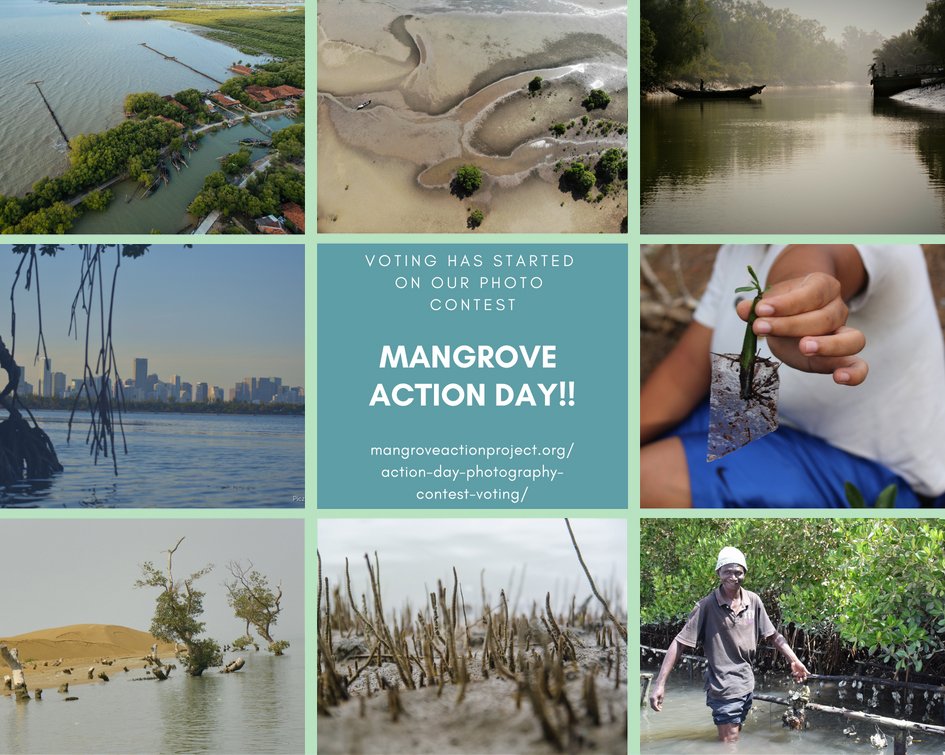 USA – This July marked the 20th anniversary of World Mangrove Day, which is recognized by UNESCO as a time to celebrate and appreciate the many benefits that mangrove ecosystems provide, and to make commitments to protect them. To celebrate this important day, the Mangrove Action Project created an annual mangrove photography contest. This year they received stunning images of mangroves from around the world, featuring the special communities and wildlife that depend on them. All photos that were entered are part of a special online exhibition to help raise awareness of these coastal ecosystems. Now, it’s your turn to vote for your favorite photos! Explore the gallery and choose which photo you think should win the People’s Choice Award. Voting ends August 31, and winners will be announced in early September. READ MORE AFRICA Muddy waters: Exploring mangrove governance in Tanzania’s Rufiji Delta  KENYA – When it comes to governance and management, mangrove forests around the world are frequently left off the map. Occupying the murky boundaries between land and sea, they’ve often been devalued as pesky shrubs that muddy up the coastline and get in the way of beach going. But millions of people rely on mangrove ecosystems for their food and income, as well as protection of their homes and farmland from high tides and storm surges. For example, a recent case study by the Center for International Forestry Research (CIFOR) shows that in the Rufiji Delta in Tanzania, local residents harvest mangrove wood for posts and poles, fuelwood and charcoal, and use the fruits and roots for medicinal purposes. Many species of fish also use the mangroves to breed, and villagers catch these fish to eat and sell. In recent years, the high value of mangroves for carbon sequestration and biodiversity preservation in the context of climate change has also come to the attention of scientists, conservationists and concerned citizens across the globe. Yet most research so far has emphasized the biophysical and ecological elements of these environments, rather than the people and policymakers whose actions – and inactions – have an impact on forests from day to day. READ MORE ASIA Support makes coastal communities strong  THAILAND – Along with my colleague Em from the MAP-Asia team and together with 8 Community Restoration Network representatives from across Thailand, we celebrated Mangrove Action Day on the 26th of July by learning and sharing experiences on community-based mangrove conservation and restoration at Pred Nai. Our Community Restoration Network members gained valuable knowledge from the Pred Nai Community who have over 30 years of experience in participatory mangrove management. One outstanding concern made by Uncle Yai, one of the conservation leaders at Pred Nai, was how to transfer their conservation awareness to the Pred Nai youths so what they’ve achieved is not lost. READ MORE Rapidly-depleting Patuakhali mangrove forests endangering lives

BANGLADESH – Un-checked tree-felling is rapidly depleting the “Green Wall”—the mangrove forest that protected the people of the coastal district from the devastation of Cyclone Sidr. Lack of effective conservation efforts is also contributing to the crisis, reports UNB.During a recent visit to the coastal area of Kalapara, the correspondent found an eight-km area on both sides of Madhukhali Lake under Mithaganj union a barren land though it was once filled with many century-old trees. Locals alleged that some influential people recently cut down many century-old trees from the area to make some quick buck. They said the role of Forest Department found mysterious as they are claiming that the forest adjacent Madhumati lake does not belong to the department though it took actions when anyone found involved in tree felling in the area over the last 50 years. Abdul Jabbar, a resident of Purba-Madhukhali village, said, ‘He would have lost his houses attack and other assets to tidal surge had there been no mangrove forest along the embankment near the lake.’ READ MORE
Indian Mangrove Microbiome Reveals Trove of Antibiotic and Heavy Metal Resistance Genes

INDIA – Mangroves are trees with high tolerance to saline environments. Hence, they flourish in coastal or brackish areas where most trees fail to grow. As a result, mangroves play a pivotal role in preserving the coastal ecosystem by acting as a physical barrier in the shoreline to prevent erosion. In addition, they have several benefits such as biodiversity, livelihood to the rural communities and water management. Mangroves cover up to 152,000 km2 globally. However, their range is decreasing due to pollution, urbanization and other human activities. There is an increasing urgency to understand the structural and functional architecture that underlies the mangrove ecosystem, and the microbial community is an important component that remains unexplored. Research teams have found a high prevalence of antibiotic resistance genes as well as heavy metal resistance genes in the Keralan Mangrove microbiome as compared to the Brazilian and Saudi Arabian mangrove microbial ecosystems. READ MORE
Global Environment Facility conservation project in Myanmar violates indigenous rights
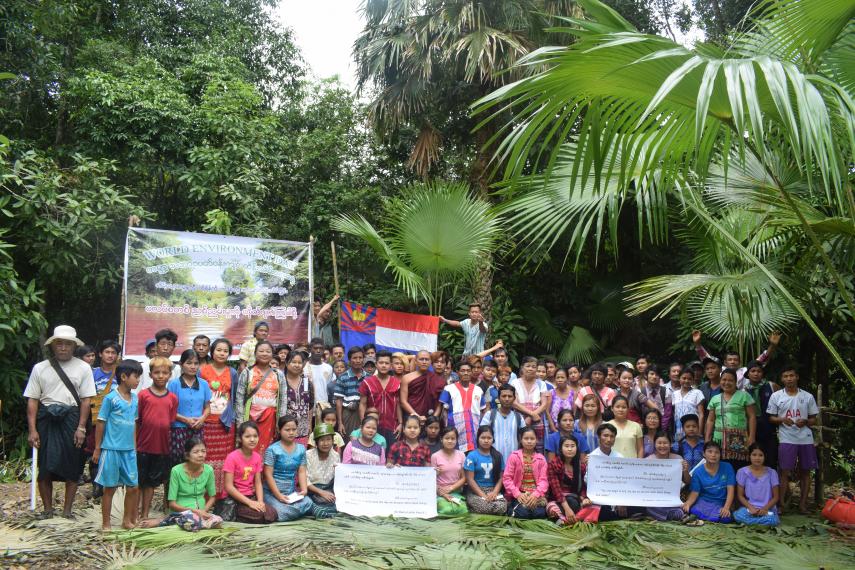
MYANMAR – On 16 July, 2018 the Conservation Alliance Tanawthari (CAT) submitted a formal complaint concerning the violation of Karen indigenous peoples’ right to Free Prior and Informed Consent (FPIC) by the Global Environment Facility (GEF) Ridge to Reef conservation project in Tanintharyi Region, Myanmar. This enormous conservation project threatens the land and resource rights of thousands of Karen indigenous people. An inception workshop is planned for Ridge to Reef on 17 July, but local indigenous communities have not been consulted. CAT is calling for GEF to suspend Ridge to Reef until a comprehensive FPIC process is carried out with all communities who will be affected by the project. “Implementing Ridge to Reef without FPIC is a serious violation of indigenous peoples’ rights and GEF safeguards,” said CAT coordinator Naw Eh Htee Wah. READ MORE
Integrating community-based adaptation into afforestation and reforestation programmes in Bangladesh

BANGLADESH – The National Adaptation Plan of Actions and Bangladesh Climate Change Strategy and Action Plan have identified coastal afforestation with local community participants as a key adaptation priority for coastal areas. Efforts will focus on expanding the quality and the coverage of the coastal afforestation programme, providing the community with climate-resilient livelihoods and an incentive to become protectors of the forest. Bangladesh is on the way to achieve the status of middle-income country by 2021. However, climate risks have the potential to delay the achievement. The county is frequently subjected to cyclones, floods, extreme weather events, and storm surges. It affects the lives and livelihoods of one fourth of country’s coastal population READ MORE
AMERICAS
Dramatic mangrove loss in Quintana Roo
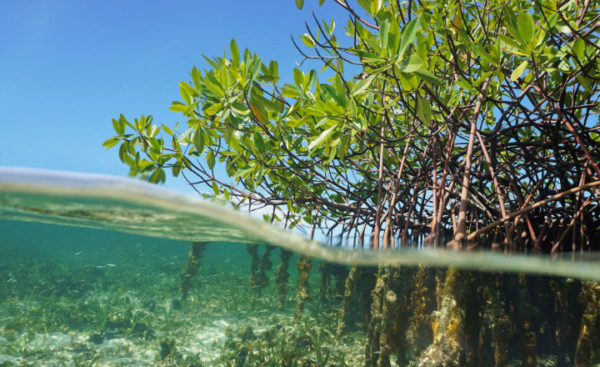
MEXICO – “The loss of mangrove in Quintana Roo is “dramatic”. In 20 years, 7,000 hectares of this ecosystem have disappeared in the state, due to tourism development and this number will increase, especially in the area of the municipality Lázaro Cárdenas, where construction projects are destroying this important natural habitat for many species”, said Jorge Herrera Silveira, researcher at the Center for Research and Advanced Studies of the National Polytechnic Institute (Cinvestav), in the framework of the presentation of the rehabilitation project of the Nichupté Mangrove Flora and Fauna Protection Area. Currently, Campeche, Quintana Roo and Yucatán occupy the first, second and third place, respectively, in mangrove area. But the state with the most loss of mangrove is Quintana Roo,” the scientist said. The 7,000 hectares of destroyed mangrove represent around 20% of the total extension that the state of Quintana Roo had before it was turned into a tourist destination, and even so it occupies the second place at a national level in this type of vegetation. READ MORE
Domino-effect of climate events could move Earth into a ‘hothouse’ state

USA – A domino-like cascade of melting ice, warming seas, shifting currents and dying forests could tilt the Earth into a “hothouse” state beyond which human efforts to reduce emissions will be increasingly futile, a group of leading climate scientists has warned. This grim prospect is sketched out in a journal paper that considers the combined consequences of 10 climate change processes, including the release of methane trapped in Siberian permafrost and the impact of melting ice in Greenland on the Antarctic. The authors of the essay, published in Proceedings of the National Academy of Sciences, stress their analysis is not conclusive, but warn the Paris commitment to keep warming at 2C above pre-industrial levels may not be enough to “park” the planet’s climate at a stable temperature. They warn that the hothouse trajectory “would almost certainly flood deltaic environments, increase the risk of damage from coastal storms, and eliminate coral reefs (and all of the benefits that they provide for societies) by the end of this century or earlier.” READ MORE
Mangroves grow slowly. In Miami, replacing them takes even longer

USA – A mangrove can take forever to grow. But getting governments to agree on how to replant trees illegally chopped down by city workers at Miami’s historic marine stadium? That really takes time Three years after a county environmental inspector stumbled upon a moonscape of mangrove stumps as the city prepared for the arrival of the popular Miami International Boat Show, not a single tree has been replanted. Plenty of emails have been exchanged, and more than 300,000 visitors welcomed since to three boat shows and a powerboat race. But the grindingly slow approval of plans and exchange of permits have left the Virginia Key site, at the center of controversial restoration efforts, missing the protective armor of about 300 trees “We’re in the middle of another hurricane season and we should be concerned about these things,” said Key Biscayne Mayor Mayra Peña Lindsay, who fought plans to relocate the busy boat show to the fragile key. “We can all do better.” READ MORE
Volunteers plant, study red mangrove propagules

USA – In its fourth year, Mangrove Mania expects to plant an additional 10,000 mature red mangrove Rhizophora mangle propagules along Lee County shorelines this fall. The soft, sandy banks have been eroded due to power boat wakes and the invasion of invasive exotics. Red mangrove propagules will help establish a fringing mangrove forest and will provide some stabilization to the shoreline. Approximately six months after the planting, a group of volunteer students will venture back to the treatment site to conduct a field study of the growth and health condition of the young mangrove trees. Armed with meter sticks and clipboards, volunteers will measure terminal shoot growth of the seedlings in multiple research plots. Metal identification tags will be placed on several of these trees for future monitoring. In prior years, students found that approximately 80 percent of the propagules that survived six months along the canals had grown an average of 25 centimeters. READ MORE
EUROPE Why Mangroves Matter

U.K. – Called the “rainforests by the sea,” coastal mangroves are among the most threatened ecosystems on earth. Current estimates indicate that up to 67% of mangroves have been lost to date, and nearly all unprotected mangroves could perish over the next 100 years. It was International Day for the Conservation of the Mangrove Ecosystem on July 26th, and we get a 101 on the priceless benefits of mangrove forests from Dr. Ahmad Aldrie Amir, a Senior Lecturer and Research Fellow at the Institute for Environment and Development (LESTARI), Universiti Kebangsaan Malaysia and the coordinator of the Malaysian Mangrove Research Alliance and Network (MyMangrove). LISTEN HERE | ACTION ALERT You can help ensure that the knowledge and skills needed to conserve and restore mangroves is preserved in coastal communities READ MORE WANT TO GET INVOLVED?
Follow and Join MAP!    

ACTION ALERTS Sign on: letter to the Chief Minister of Sabah, Malaysia – To stop the destruction of communities’ mangrove area in Pitas and support indigenous communities to protect and conserve the last remaining 1000 acres of their forest – SIGN HERE President Abdulla Yameen: Stop Destruction of Kulhudhuffushi Mangroves! CLICK HERE 
VOLUNTEER OPPORTUNITY
MANGROVE ISSUES Want to learn more about mangroves?
Our short presentation will give you a better understanding of the issues we are working to solve. WATCH PRESENTATION What is CBEMR? Easy to follow fact sheet – CLICK HERE What is EPIC? – The Ecosystems Protecting Infrastructure and Communities (EPIC) project: the role of ecosystems as protective barriers against climate induced hazards MANGROVES APP AVAILABLE
A pictorial field guide for easy identification of various mangrove species and learning about the mangroves ecosystem. CLICK HERE View MAP’s uploaded Videos at MAPmangrover’sChannel
Question Your Shrimp Consumer/Markets Campaign!
WATCH VIDEO Mangrove Restoration in Asia – Watch Short Video 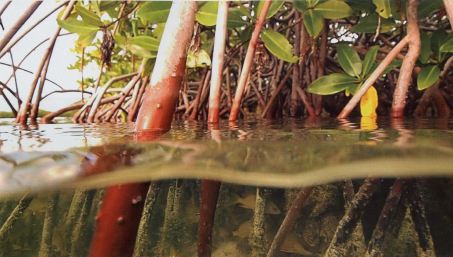
READ A MOSAIC OF LIFE
Peek into the underwater world of mangroves, "womb of the sea." By Liz Cunningham Photos By Wes Matweyew and Liz Cunningham The Value of Mangrove Forests View Video CBEMR Experience Exchange MAP 2017 English Subtitles
VIEW THE VIDEO Mangroves: Guidebook to Malaysia – Click Here
Mangrove rehabilitation in Asia – Local Action and cross-border Transfer of Knowledge for the Conservation of Climate, Forests and Biodiversity VIEW VIDEOS HERE SHARE MAP'S VISION
CLICK HERE to watch short introductory video. Together we can work "at the roots of the sea". Our short documentary, Reducing the Risk of Disaster through Nature-Based Solutions : Mangroves

Exclusive Interview with Alfredo Quarto, Co-Founder and Executive Director of Mangrove Action Project – See more
Marvellous Mangroves Curriculum The Marvellous Mangroves Education Forum is an online hub for those utilizing the Marvellous Mangroves (MM) Curriculum. It gives students, teachers and anyone interested in mangroves, the opportunity to learn and share ideas themed around the curriculum, to connect and communicate with others around the globe whilst exploring mangroves from your computer or on the go. VISIT 
The award-winning Marvellous Mangroves (MM) curriculum educates children on the importance of mangroves and their ecological functions, teaching them about modern challenges and mechanisms for sustainability. VIEW VIDEO 
MAP Education Director Martin Keeley’s most recent book is Marvellous Mangroves: Myths and Legends, a compilation of stories from “Mangrove Peoples”—those who live on shorelines where mangroves thrive—from around the world. READ MORE Marvellous Mangroves Curriculum in Bangladesh – WATCH VIDEO
MARVELLOUS MANGROVES IN BRAZIL
En Portuges 
Marvellous Mangroves – A Curriculum-Based Teachers Guide. FOR MORE ON MAPs AWARD WINNING CHINA MANGROVE CURRICULUM VISIT

VIMEO SHOW
VISIT OUR "MM" WEBPAGE Check out our presentation for more details on Marvellous Mangroves Read this 10 page history of the development of MAP’s educational curriculum VIEW DOCUMENT
Article in Canada's Green Teacher Magazine – Read More
FREE MAP Mangrove e-cards CLICK HERE

MAP’s e-Cards offer you a unique way to spread the word about MAP’s good works, while sharing beautiful photographs of the mangroves
Donate to MAP via Paypal
Giving could never be easier

It’s the action, not the fruit of the action, that's important. You have to do the right thing. It may not be in your power, may not be in your time, that there'll be any fruit. But that doesn't mean you stop doing the right thing. You may never know what results come from your action. But if you do nothing, there will be no result. —Mahatma Gandhi Green Planet Fundraising Assists MAP – LEARN MORE
Volunteer Opportunities with Mangrove Action Project CLICK HERE
"Question Your Shrimp" Campaign Question Your Shrimp- Don't Buy or Sell Imported Tropical Shrimp! Sign the Petition Learn more about the affects of the shrimp industry on mangroves by visiting our blog
Editor’s Note: Mangrove Action Project’s Executive Director, Alfredo Quarto was interviewed about shrimp by Green Acre Radio’s Martha Baskin
LISTEN TO INTERVIEW Information sheds clear light on shrimp-mangrove connection
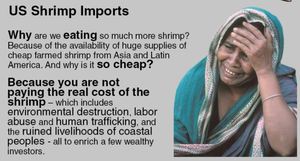
SEE DETAILS MANGROVE/SHRIMP Sign the Consumer's Pledge to avoid imported shrimp

Not yet a MAP News subscriber?
Click here to subscribe. Note to Our Readers:We strive to keep active links in our newsletter. However, due to circumstances beyond our control, occasionally links to stories may become broken. If you find a link to a story is not functioning, please cut and paste the headline into your browser search bar. In most cases you should be able to locate the original story.
Help Mangrove Action Project through your recycled E-Waste. List of Accepted E-waste Items:
Injet Cartidges, Cell Phones, Pagers, GPS, Radar Detectors, Mobile Hot Spots, Calculators, eBook Readers, iPods/MP3 players, Digital/Video Cameras/Camcorders, PDAs, iPads/Tablets/Laptops, Video Game Consoles, Handheld Video Games
Visit the Mangrove Action Project recycle website Click on the recycle button then click on the Download Shipping Label, and follow the instructions. 
|




























